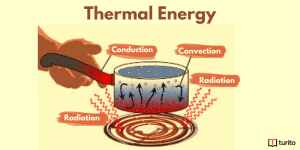Mu Naught Value
The mu naught value is 4π × 10-7 H/m. But what is mu naught? Mu naught or µ0 is the permeability constant. It is synonymous with the magnetic constant or the permeability of free space. So, the mu naught value measures the amount of resistance offered against the magnetic field formed in a vacuum. The following article will help you understand the value of mu naught can be derived.
Value Of Mu Naught
The value of mu naught(µ0), i.e., the absolute permeability of free space, had its defined value as 4π × 10-7 H/m or µ0 = 12.57 × 10-7 H/m approximately.
However, the SI system was revised on 20 May 2019. The latest revision made the vacuum permeability no longer a constant. Instead, it defines mu zero as a value that needs to be determined experimentally.
The recently measured mu naught value is 4π × 1.00000000082(20)×10-7 H⋅m-1.
| Points to remember:
The constant μ0 is pronounced as “mu nought” or “mu zero”. Mu naught (µ0 ) is also known by the following names:
|
The History of Mu Naught Names
With so many synonyms for a constant, you must be wondering which ones are more appropriate. Here is a history of how these names emerged and which one is widely used today.
Standards organizations have accepted magnetic constant to be the preferred name for μ0. The other names are listed as synonyms.
Historically, the μ0 constant has been carrying different names. In 1987, the constant was called the permeability of vacuum.
Later it was termed as “magnetic permittivity of vacuum”. Today, this name is rarely used.
The term “vacuum permeability” or “permeability of free space” came later and remains widespread.
Standards organizations used the name “magnetic constant” to avoid the use of the terms “permeability”, and “vacuum” as these have physical meanings.
The change of name was because μ0 was a defined value. It was not the result of experimental measurement. However, in the new SI system, the permeability of the vacuum doesn’t have a defined value. Rather it is a measured quantity with a certain level of uncertainty.
What is the Mu Naught Unit?
In Physics, the units are different scales that help measure an entity. Similarly, the value of mu naught is measured in henries per meter. It is abbreviated as H.m. It is equivalent to Newton(kg.m/s2) per Ampere squared (N.A-2).
What is the Difference Between Magnetic Permeability and Permeability of Free Space?
Magnetic permeability or simply permeability is represented by μ, while permeability of free space is represented by μ0.
The permeability of free space (μ0) is just the magnetic permeability associated with a vacuum. So, it is the permeability of a magnetic field in the absence of any material.
It is an important quantity in Physics. It appears in many relations and formulas.
Formulas Containing Mu Naught
The three most commonly used formulas that contain mu naught are as follows:
- Speed of light in a vacuum
- Ampere’s law
- Magnetic inductance.
Mu naught (permeability of free space) = 1.25663706 x 10-6 H/m
Speed of Light: c = 10 0
Ampere’s Law: B || l = 0I
Magnetic Inductance: L = 0AN2l
Furthermore, mu naught can also be found in some other relations.
The energy density of magnetic field (B) is defined as
Energy = B220
Also, it is used to explain the magnetic force. The constant tells how strong the force is between two electric currents a particular distance apart:
F= I1 I22πμ0r
In the above equation, F is the Magnetic force, and I1 and I2 are two currents. Here r represents the separation between the current carrying wires.
Dimensional Formula of Permeability
The dimensional formula of permeability is [M1 L1 T-2 I-2]
In the formula,
M = Mass
L = Length
I = Current
T = Time
Derivation of Dimensional Formula
Magnetic Permeability (μ) = Magnetic flux density × [Magnetic field strength]-1 . . . . (1)
Force = magnetic flux density × current × length
So, magnetic flux density = Force × [Current × Length]-1 . . . . (2)
The dimensional formula of force, current, and length are as follows:
Force = [M1 L1 T-2] . . . (3)
Current = [M0 L0 T0 I1] . . . (4)
Length = [M0 L1 T0] . . . . . (5)
Substituting equations 3, 4 and 5 in equation 2,
Magnetic flux density = Force × [Current × Length]-1
= [M1 L1 T-2] × [M0 L0 T0 I]-1 × M0 L1 T0]-1
Thus, for magnetic flux density, the dimensional formula will be as follows:
= [M1 L0 T-2 I-1] . . . . (6)
The dimensional formula of magnetic field strength is = [M0 L-1 T0 I1] . . . . . (7)
Now we will substitute equations 6 and 7 in equation 1,
Magnetic Permeability = Magnetic flux density × [Magnetic field strength]-1
μ = [M1 L0 T-2 I-1] × [M0 L-1 T0 I1]-1 = [M1 L1 T-2 I-2]
Thus, the dimensional formula of permeability(μ) or permeability of free space (μ0) will be [M1 L1 T-2 I-2].
Relative Permeability and Mu Naught
Relative permeability is the ratio of permeability and permeability of free space. It is represented as:
μr = μ / μ0
Values of Relative Permeability for Different Materials
On the basis of magnetic properties, materials can be classified into the following categories:
- Diamagnetic materials: Examples: diamond, copper, gold, silver, mercury, alcohol, nitrogen, hydrogen, all inert gasses, and more. When they are placed in a magnetizing field, the field lines do not easily pass through them. Thus, their μr = -ve. It is less than 1.
- Paramagnetic materials: Examples: Tungsten, sodium, aluminum, oxygen, chromium, manganese, magnesium, platinum, and more. The magnetic field lines pass through these materials rather than through the air. So, the relative mu value is greater than 1.
- Ferromagnetic materials: Examples include iron, nickel, cobalt, gadolinium and other alloys. The relative mu value is very high for ferromagnetic materials.
How is Permeability Different from Permittivity?
So far, we have covered permeability, but what is permittivity?
Permittivity is the property of a material which measures the opposition offered against the electric field formation. It is represented by ϵ.
The SI unit of permittivity is Farad/meter.
The permittivity of free space is the least possible value of permittivity. It is for a vacuum. It is also called the electric constant and is denoted by ϵ0. The value of permittivity of free space is 8.85 ✕ 10-12 Farad/meter.
When permittivity of a dielectric is represented as a ratio of absolute permittivity to electric constant, it is referred to as relative permittivity. Relative permittivity is a dimensionless quantity. The following equation represents the relative permittivity:
ϵr = ϵ0 / ϵ
The following table enumerates the key differences between permeability and permittivity.
| Parameters | Permittivity | Permeability |
| Definition | It measures the opposition offered by a material against the formation of an electric field. | It is a measure of the extent to which magnetic field lines enter a substance. |
| Formula | Permittivity= Electric displacement/ Electric field intensity | Permeability=Magnitude of magnetic induction (B) / Intensity of magnetic field(H) |
| SI Unit | Farad/meter or F/m | Henries/meter or H/m |
| Represented by | ϵ | μ |
| Field | Electric field | Magnetic field |
| The value in free space | ϵ0= 8.85✕ 10-12 Farad/metre | μ0 = 4𝝅×10-7 H/m |
| Principle involved | Polarization of electric charges | Magnetization |
What is Complex Permeability?
Complex permeability is a tool that helps deal with high-frequency magnetic effects. It is easy to calculate. The auxiliary magnetic field and the magnetic field at low frequencies in a linear material are proportional to each other via scalar permeability. These quantities react with one another at high frequencies with some lag time. This phenomenon is termed as lag time effect.
Points to remember:
|
Conclusion
Mu naught value is 4π × 10-7 H/m. It is also known as permeability of free space or magnetic constant. This physical quantity is an integral part of various important Physics formulas like Ampere’s law, magnetic inductance, speed of light in a vacuum, and more.
Frequently Asked Questions (FAQs)
Q1. What is mu naught?
Mu naught is the permeability constant or the permeability of free space. Mu naught value expresses the extent to which magnetic field lines enter a substance. The term mu naught is often misspelled as mu not. It is also known as the magnetic constant.
Q2. What is relative magnetic permeability?
Relative magnetic permeability is represented by μr. It is the magnetic permeability ratio to free space permeability (mu naught). It is given by the following equation:
μr = μ / μ0
Q3. What is the relation between mu naught and epsilon naught?
Mu naught is the permeability of free space. It gives the relation between charges and the magnetic field created by the charges. In contrast, epsilon naught is the permittivity of free space. It depicts the relation between the electric field of charges and static charges. The relation between the two can be studied at the speed of light in a vacuum formula:
Speed of Light: c = 10 0

Relevant Articles
Understanding Thermal Energy: What It Is and How It Works
Thermal energy is essential to our daily lives, from warming …
Understanding Thermal Energy: What It Is and How It Works Read More »
Read More >>Avogadro’s Number: Meaning, Importance, and More
Introduction The concept of measuring the microscopic particles that make …
Avogadro’s Number: Meaning, Importance, and More Read More »
Read More >>Kinetic Friction – Definition, Laws, Types
Kinetic Friction Kinetic force is a force acting between two …
Kinetic Friction – Definition, Laws, Types Read More »
Read More >>




















Comments: